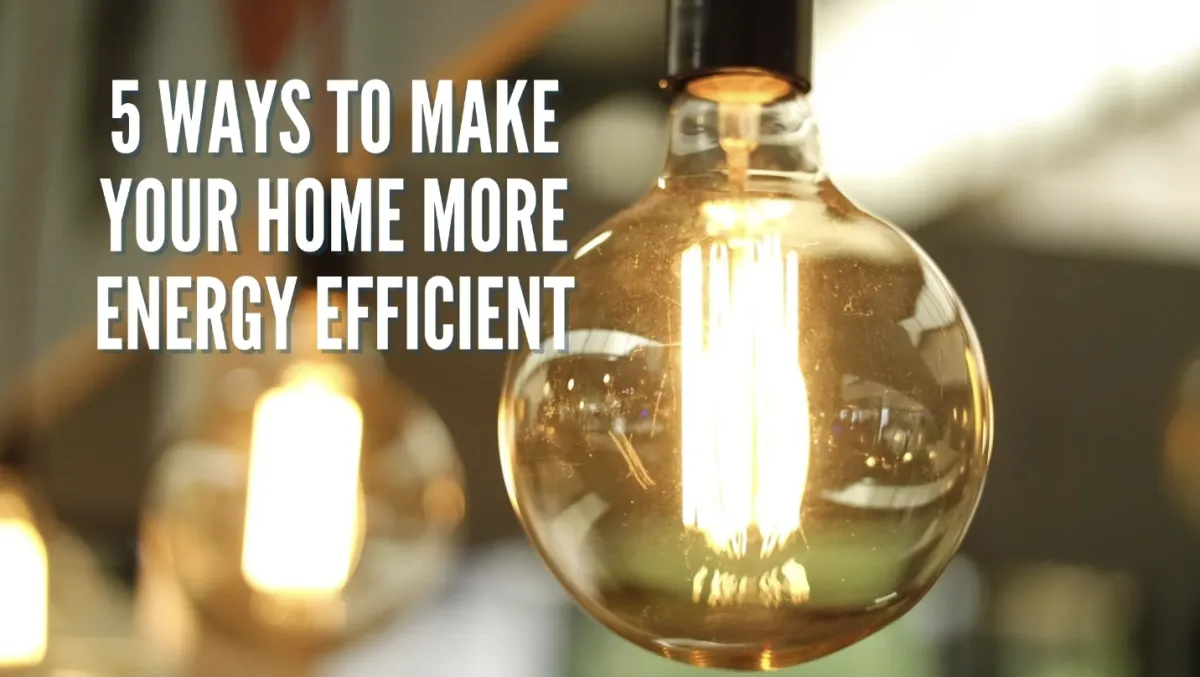

At home in your neighbourhood

Energy Efficent
5 Easy Ways to Make Your Home More Energy-Efficient In a world where environmental consciousness is on the rise, making your home more energy-efficient is not only beneficial for the planet but also for your wallet. Energy-efficient homes consume less energy, reduce greenhouse gas emissions, and ultimately save you money on utility bills. If you're looking to minimise your environmental footprint and maximise your savings, here are five simple yet effective ways to make your home more energy-efficient.
Upgrade to LED Lighting:
One of the easiest ways to reduce energy consumption i your home is by switching to energy-efficient LED lighting. LED bulbs use significantly less electricity compared to traditional incandescent or fluorescent bulbs while providing the same amount of light. Not only do LEDs have a longer lifespan, but they also generate less heat, helping to keep your home cooler during hot summer months. By replacing your most frequently used light fixtures with LEDs, you can significantly reduce your energy consumption and save money in the long run.
Optimise Heating and Cooling:
Heating and cooling systems account for a significant portion of household energy usage. To make your home more energy-efficient in this area, start by properly insulating your home. Insulation helps to maintain a consistent indoor temperature, reducing the need for excessive heating or cooling. Check for any air leaks around doors, windows, and ducts, and seal them to prevent drafts and heat loss.
Additionally, consider installing a programmable thermostat. This device allows you to set different temperature schedules based on your daily routines, so you're not wasting energy heating or cooling an empty home. By adjusting your thermostat settings by just a few degrees, you can make a substantial impact on your energy consumption and reduce your heating and cooling costs.
Upgrade Appliances to Energy Star:
Older appliances tend to consume more energy than their newer, energy-efficient counterparts. When it's time to replace appliances such as refrigerators, washing machines, dishwashers, or air conditioners, opt for models with the Energy Star label. Energy Star-certified appliances are designed to operate more efficiently, using less energy without sacrificing performance. Not only will this reduce your energy consumption, but it will also lower your utility bills over time.
Harness Natural Light:
Maximising natural light not only creates a more inviting and comfortable living space but also reduces the need for artificial lighting during the day. Make the most of natural light by keeping curtains and blinds open, trimming back any obstructing foliage near windows, and using light-coloured paints on walls and ceilings to reflect light. Additionally, consider installing skylights or solar tubes in rooms with limited access to natural light.
Unplug and Power Down:
Many electronic devices continue to consume energy even when not in use. This phenomenon is known as "standby power" or "phantom load." To minimise energy waste, unplug electronics such as televisions, game consoles, chargers, and small appliances when they are not in use or use power strips with on/off switches. By adopting this simple
habit, you can eliminate unnecessary energy consumption and save money on your electricity bill.
Making your home more energy-efficient doesn't have to be a daunting task. By implementing these five easy steps—upgrading to LED lighting, optimising heating and cooling systems, upgrading to Energy Star appliances, harnessing natural light, and unplugging electronic devices—you can significantly reduce your energy consumption, contribute to a healthier planet, and enjoy long-term savings. Remember, every small effort counts when it comes to creating a more sustainable future for ourselves and generations to come.





